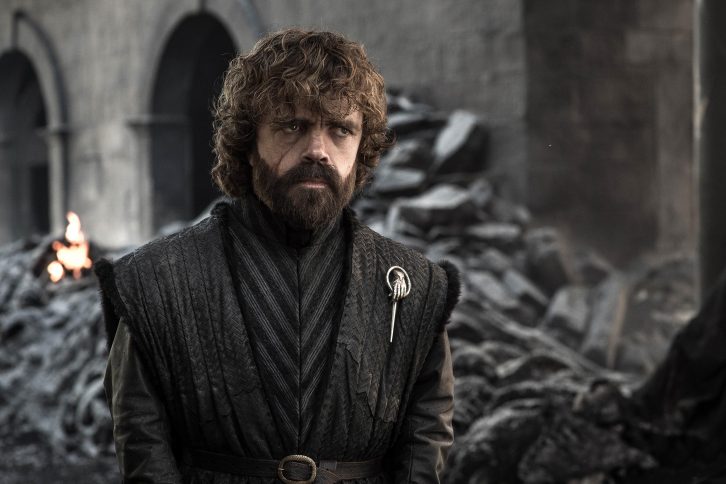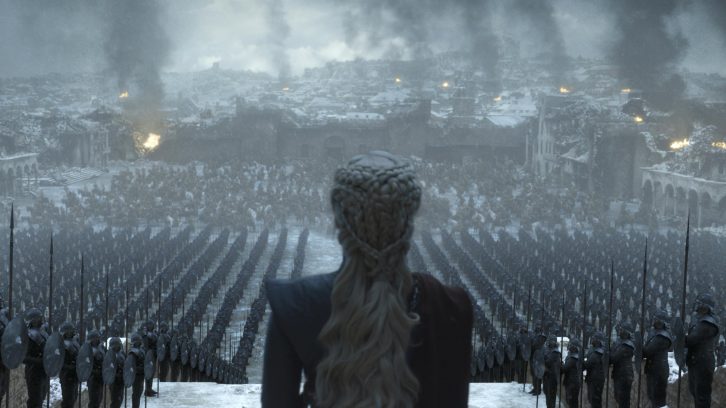Even if you managed to never watch Game of Thrones it was still impossible to ignore thanks to its unparalleled ability to generate headlines, from character deaths to dodgy cinematography and budgets of $15 million an episode (apparently still not enough to remove a Starbucks cup). This ties in with an overall increase in production spend across Europe of more than 20 per cent between 2013 and 2017, according to Ampere Analysis.
“It really does seem like Game of Thrones has set a precedent for other studios as well as showing the desire among consumers for high-budget epics,” says Ampere’s Toby Holleran, citing other HBO shows like Westworld, The Watchmen and Joss Whedon’s The Nevers.
Paul Barnes, MD EMEA, App Annie, notes that the cost of producing Game of Thrones is still “a drop in the ocean” compared to the budgets of big SVoD companies like Amazon (whose upcoming Lord of the Rings show is estimated to cost $20 million per episode) and Netflix (who paid $100 million just to keep Friends on the platform for another year).
One immediate beneficiary of Game of Thrones’ expense is the economy of Northern Ireland, where the bulk of the show is made. The production’s direct spend on goods and services in Northern Ireland is over $250 million, with a similar amount brought in through tourism. “It’s a pretty innovative project in the extent to which it’s rolling out tourism products,” says Richard Williams, chief executive of Northern Ireland Screen, “which I suppose is familiar enough in the US with theme parks and whatever, but not so developed here – and certainly not developed on the back of TV. Where we’ve seen that before it’s all been on the back of film.”

On the production side, the show has facilitated the building of two new studios in Belfast; Titanic Studios and Belfast Harbour Studios. “The investment from the Belfast Harbour to build that all came from the optimism of Game of Thrones,” explains Williams. “Before Game of Thrones, Northern Ireland wasn’t really known in UK terms as a significant screen industry hub. After Game of Thrones, Northern Ireland is known as a screen industry hub globally.”
As the show has run for the best part (its fans would argue) of a decade, Northern Irish production staff who arrived on the series as trainees have built up a considerable level of experience. “And experience on the most technically challenging show of its era is good experience for any CV,” adds Williams. “It goes beyond those that are directly employed by the project and goes into the supply chain. It was all the people that work for the post houses (Yellow Moon and Ka-Boom), work for the facilities companies, work for the catering company, work for the extras company. The impact on all of that has been massive.”
What then might be the reason for this fantasy show’s giant success? “I think it’s a combination of strong, detailed, popular source material combined with high budgets and cliffhangers,” says Holleran. “The slight divergence from the books in the later series, especially at points beyond what the books covered also led to even those with background knowledge wondering what was happening next. Also the show entrenches rather early on that even some of the characters who receive more screen time are not immune to being killed off early on, which adds to the ‘who will die?’ factor. Additionally, there has been some excellent (in my opinion) casting for villains such as Iwan Rheon and Jack Gleeson, which can lead to viewers wanting them to receive their just desserts.”
This has created a real ‘water cooler’ effect, with fans tuning every week in order to talk about the show and avoid spoilers at all costs. “Weekly airing means that there’s hype around each episode – something similar seems to happen with the big weekly BBC dramas like Bodyguard,” explains Holleran. “Looking at US consumers who said they ‘strongly agree’ that TV shows give them something to talk about, taking HBO as a premium channel has a higher percentage point over-index than any other TV service, while this demographic were twice as likely to take HBO Now.”

Indeed, apps carrying Game of Thrones saw a “significant lift” in downloads immediately after the season eight premiere, according to Barnes: “The average daily downloads of NOW TV for the seven days following the season eight premiere of Game of Thrones saw 130 per cent more downloads than the average daily downloads in April in the lead up to the premiere (1st-13th April).” In the same timeframe, France’s OCS saw 435 per cent more downloads, and Germany’s Sky Ticket 245 per cent more downloads.
“There has certainly been a shift in how we watch our favourite shows. It’s been a long time since we checked the Radio Times guide, and we’re now moving from on-demand to on-demand on-mobile,” adds Barnes. “A substantial crown of viewers cast from their phones and each episode spawns a wave of related review videos on YouTube. So, while Game of Thrones may be a big screen experience – especially in mind of The Long Night’s controversially gloomy cinematography – each episode triggers additional consumption on smartphones (especially for superfans). What’s most significant about Game of Thrones’ huge popularity is the way social media conversation has helped to recreate the sense of live TV programming,” he concludes.
Whether we’ll see players like Netflix recreating this effect is arguably down to their patience, with Ampere research suggesting that SVoD originals cancelled between September 2018 and March 2019 were axed after an average of 2.1 seasons. So if they want to usurp the show of the decade, they might want to let their series drag-on.







